Deciding Whether Convenia Is Right For Your Cat: A User Guide
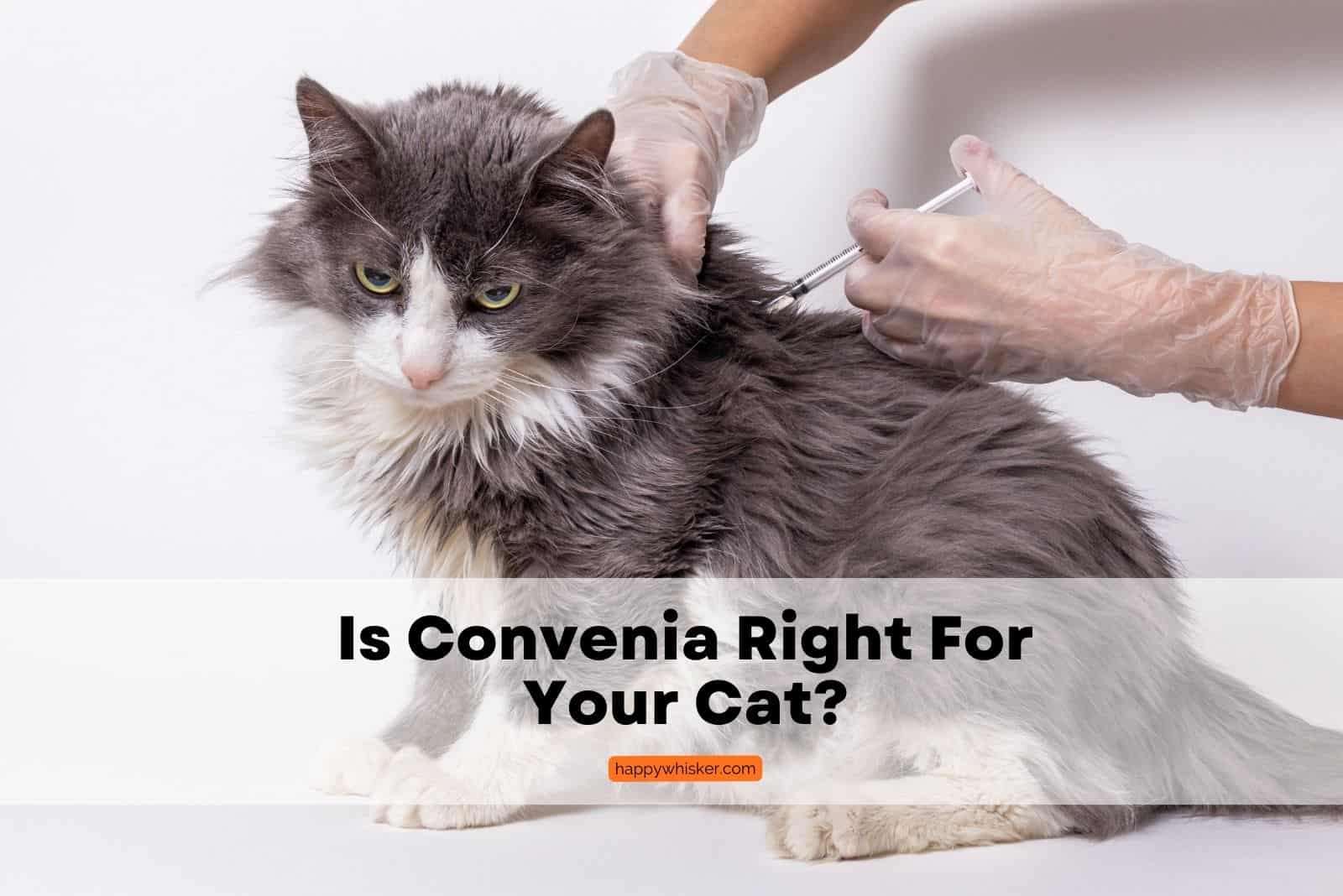
Cat owners always want to choose the best course of action to treat their cat’s medical issues.
One treatment option that is becoming increasingly popular is Convenia, a single-dose injectable antibiotic.
This user guide will help you decide whether Convenia is the right choice for your cat and provide information about the pros and cons of this treatment option.
We will discuss the indications for use, the benefits and drawbacks of Convenia, and the necessary steps for administering the drug.
What Is Convenia?

Convenia is a long-acting injectable antibiotic, and is also a third-generation cephalosporin antibiotic.
This group of antibiotics has a broad spectrum of activity. That means it’s very efficient in killing many different bacteria, including many that are resistant to other antimicrobials.
Convenia is used to treat a variety of bacterial infections in cats and dogs, and pet owners like it due to its efficiency and convenience of administration. Let me explain why.
Convenia is designed to be administered as a single injection, and it stays in the body for 14 days, effectively treating bacterial infections.
As the antibiotic remains in the body for 14 days, there is no need for pet owners to give their pets multiple doses of oral antibiotics daily!
Is Convenia A Good Antibiotic?

Convenia is generally considered to be a good antibiotic and has been proven effective in treating many different bacterial infections.
However, please know that Convenia is not “the perfect antibiotic” that treats every bacterial infection out there!
It is not necessarily the best choice for every cat, and your vet will be the one to determine if your cat should be given Convenia or some other type of antibiotic.
How Does Convenia Kill Bacteria?
Convenia, like any other type of antibiotic, works by inhibiting bacterial cell wall synthesis.
Why is the synthesis of the cell wall so important? Well, the cell wall is essential for the bacteria to maintain its structural integrity and survive!
If its synthesis is inhibited, the cell wall becomes weaker and weaker, and cells grow weaker as well, until the cell is so weak that it’s unable to replicate or survive.
As a result, the bacterial population decreases, and the infection is under control!
Is Convenia FDA Approved?

The U.S. Food and Drug Administration (FDA) has approved Convenia (cefovecin) for use in dogs and cats to treat certain types of bacterial infections.
According to the FDA, Convenia is an injectable cephalosporin antibiotic that is indicated for treating skin and soft tissue infections, including abscesses, in dogs and cats.
Uses Of Convenia For Cats
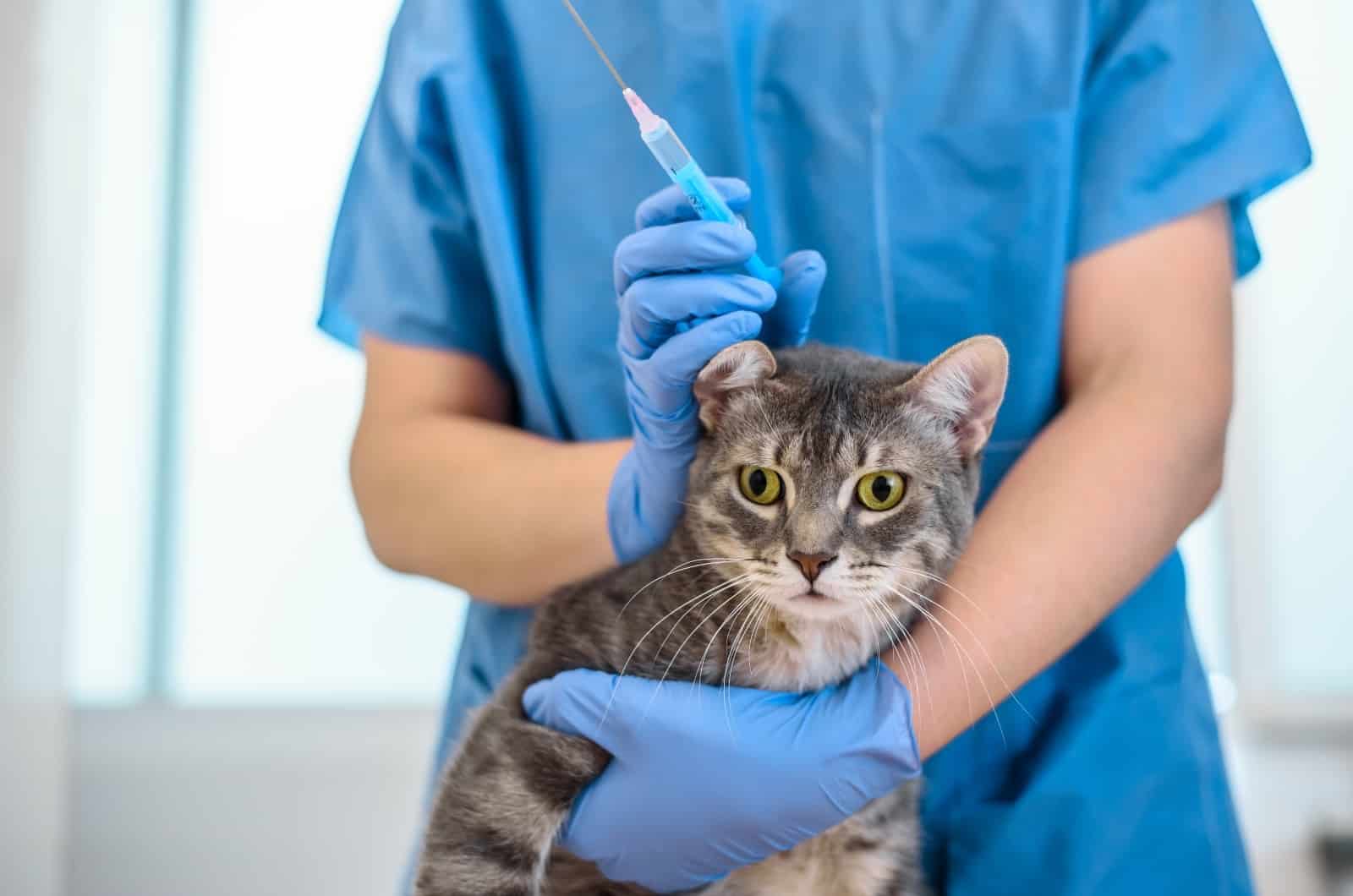
Convenia is an antibiotic injection that can treat a wide range of bacterial infections in cats, including:
• urinary tract infections
• bacterial skin infection (especially for skin infections caused by susceptible strains of Pasteurella multocida)
• respiratory tract infections
• certain types of gastrointestinal infections
Convenia is typically used when an oral antibiotic is not an option or when a more convenient treatment option is desired.
For example, it may be used in cases where a cat is unwilling or unable to take oral medications or if the infection is severe and requires rapid treatment.
Do You Need A Prescription For Convenia?
Yes, Convenia is a prescription medication. That means it requires a veterinarian’s prescription to be obtained. Hence, you cannot get Convenia at the pharmacy without the vet’s instruction.
Using Convenia or any other medication without a prescription or consulting a veterinarian is generally not recommended.
Giving your pet antibiotics without a vet’s instruction can, in fact, be dangerous for the cat!
How Is Convenia Given To Cats?
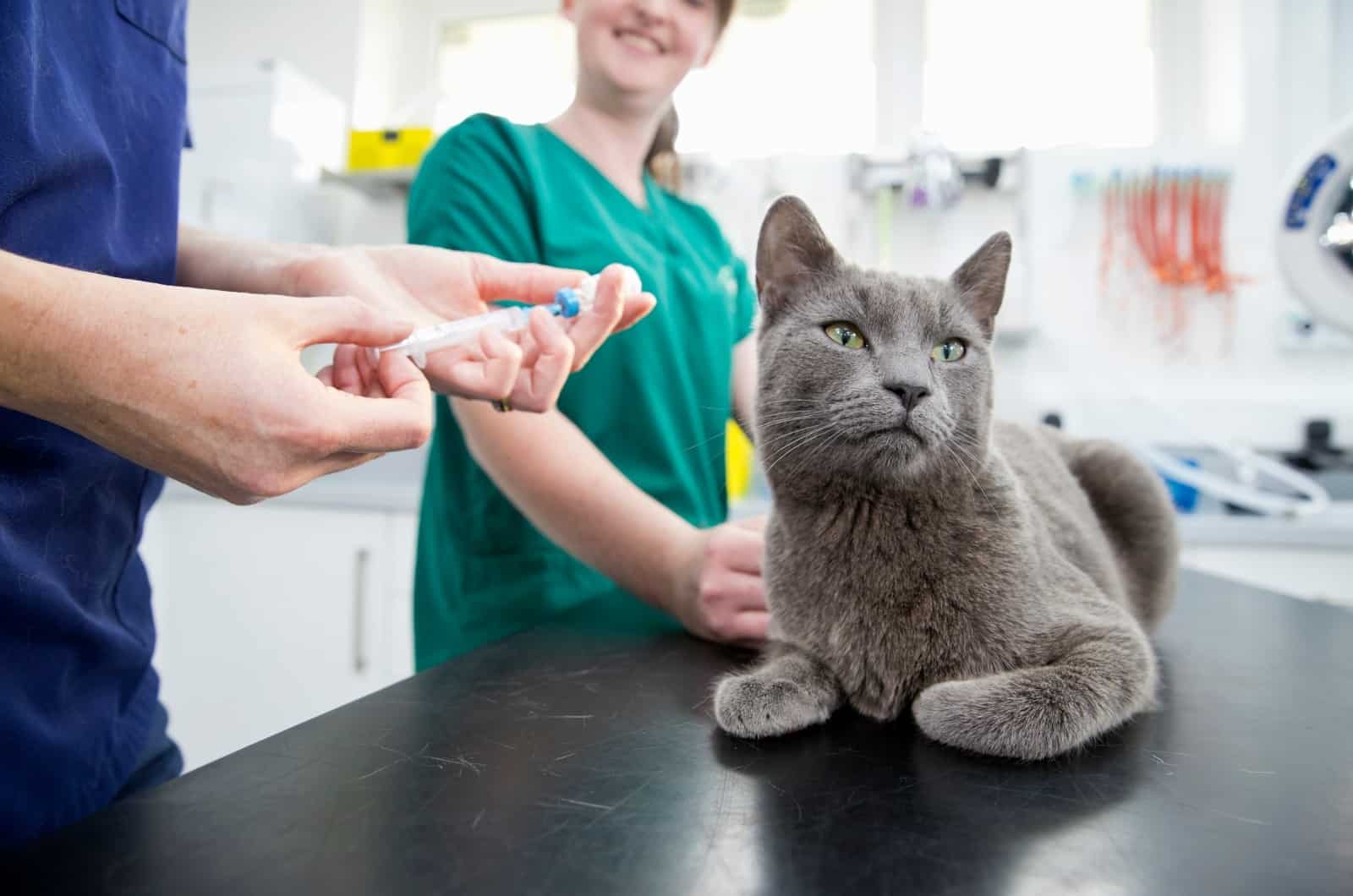
Convenia is a prescription medication that is administered by injection.
Convenia is typically given as a single injection, administered directly into the muscle (intramuscular injection) or under the skin (subcutaneous injection).
The specific injection site and dosage will depend on the condition being treated and the size and weight of the cat.
Drugs.com states, “CONVENIA should be administered as a single, one-time subcutaneous injection at a dose of 3.6 mg/lb (8 mg/kg) body weight.”
They also add, “The safe use of CONVENIA in dogs or cats less than 4 months of age.”
Benefits Of Using Convenia
Convenia has several potential benefits when used to treat bacterial infections in cats. Some of the potential benefits of Convenia include:
1. Convenience
The primary benefit of using Convenia is its convenience. Unlike other antibiotics, which require multiple doses over several days or weeks, Convenia can be administered in a single injection.
This eliminates the need to return to the veterinarian for multiple follow-up appointments and makes it easier to ensure that the pet is receiving the full course of antibiotic treatment.
2. Cost-Effectiveness
In addition to its convenience, Convenia is also cost-effective. Since it is administered in a single injection, there is no need to purchase multiple doses of antibiotics, which can add up quickly.
3. Efficiency
Furthermore, Convenia is effective against various bacterial infections, so there is no need to purchase different antibiotics for different infections.
4. Safety
Another benefit of using Convenia is its safety. The product has been extensively tested and is considered to be safe for use in both dogs and cats.
Scientific Studies Proving The Effectiveness Of Convenia In Cats

Several scientific studies have been conducted to evaluate the effectiveness of Convenia in cats.
Study No. 1: The efficacy and safety of cefovecin in the treatment of feline abscesses and infected wounds
The study was conducted to evaluate the effectiveness of Convenia (cefovecin) in the treatment of bacterial abscesses and wounds in cats.
The study found that Convenia was as effective as amoxicillin/clavulanic acid in treating these conditions, with an efficacy rate of 100%!
This proved that Convenia may be a valuable option for treating abscesses and wounds in cats.
Study No. 2. Efficacy and safety of cefovecin for the treatment of urinary tract infections in cats
This study evaluated the effectiveness and safety of Convenia (cefovecin) in treating urinary tract infections in cats.
The researchers compared Convenia, which was given as a single injection, with cephalexin, which was given orally twice daily, in cats with an urinary tract infection.
The study showed that Convenia effectively eliminated the bacterium Escherichia coli in 76.7% of cats, compared to 62.5% of cats treated with cephalexin. The study also found that Convenia was safe and well-tolerated by the cats.
Study No. 3: Effectiveness and safety of cefovecin sodium in the treatment of cats with abscesses and infected wounds
This study evaluated Convenia’s (cefovecin sodium) effectiveness and safety in treating cats with naturally occurring skin infections (abscesses and infected wounds).
The study compared the effectiveness of a single injection of Convenia to oral cefadroxil administered once daily for 14 days.
The study showed that Convenia was as effective as cefadroxil in treating these conditions, with 97% of cats treated with Convenia and 91% of cats treated with cefadroxil considered treatment successes at the final assessment on day 28.
For the cats involved in the study, Convenia caused no serious adverse events or deaths.
Risks Of Using Convenia

As with any drug, there are potential dangers and side effects while using Convenia in cats.
Convenia may cause the following negative effects:
• Nausea and vomiting: Some cats may experience nausea or vomiting after receiving a Convenia injection.
• Diarrhea: Convenia may cause diarrhea in some cats.
• Anorexia (loss of appetite): Convenia may cause decreased or loss of appetite in some cats.
• Allergic reactions: As with any medication, there is a risk of an allergic reaction to Convenia. Signs of an allergic reaction may include difficulty breathing, hives, swelling of the face, and collapse.
• Injection site reactions: Convenia may cause irritation or swelling at the injection site.
• Inappropriate urination: A small number of cats have displayed this side-effect of Convenia.
It is important to note that these side effects are not common but can occur.
If you notice any unusual symptoms in your cat after they receive a Convenia injection, it is essential to contact your veterinarian as soon as possible.
Contraindications Of Using Convenia For Cats

There are certain circumstances in which Convenia may not be appropriate or may be contraindicated for use in cats. Some potential contraindications for the use of Convenia in cats include:
• Allergy or sensitivity to any of the ingredients in Convenia
• History of hypersensitivity to other cephalosporin antibiotics and penicillin-like antibiotics
• Severe liver or kidney disease
• Pregnancy or lactation
• Active infection caused by a virus or fungi (antibiotics are only effective against bacterial infections, so if your infection is caused by a virus, taking antibiotics won’t help and may even cause more harm.)
Important Note
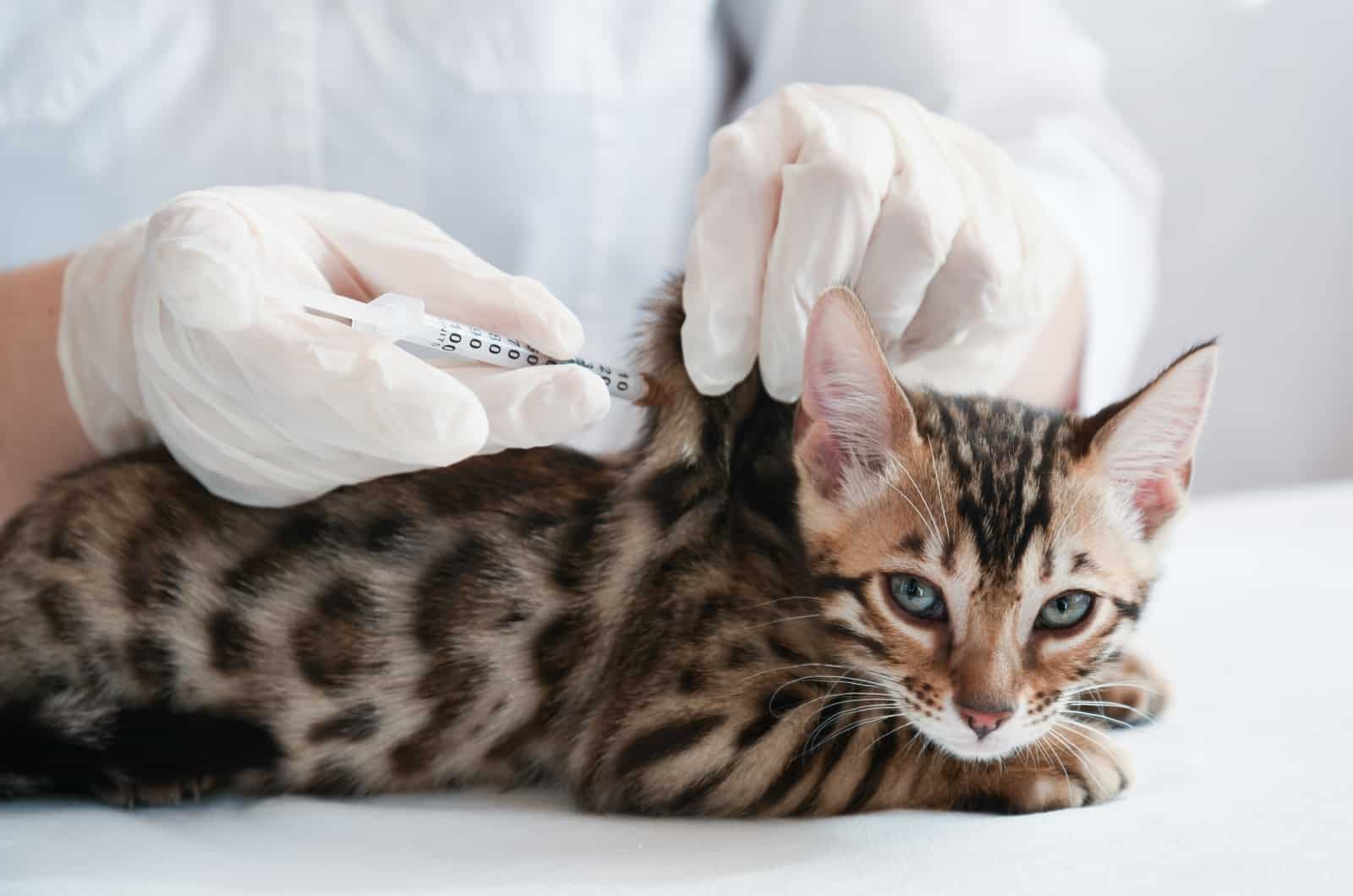
It is crucial to remember that a shot of Convenia should only be administered under the supervision of a veterinarian because it is not suitable for all cats and may not be successful against some types of infections.
Furthermore, like with any antibiotic, there is the potential for side effects such as nausea, vomiting, and diarrhea.
To ensure the safe and effective use of this medicine, it is equally critical to follow the dose and administration recommendations prescribed by your veterinarian.
In Conclusion
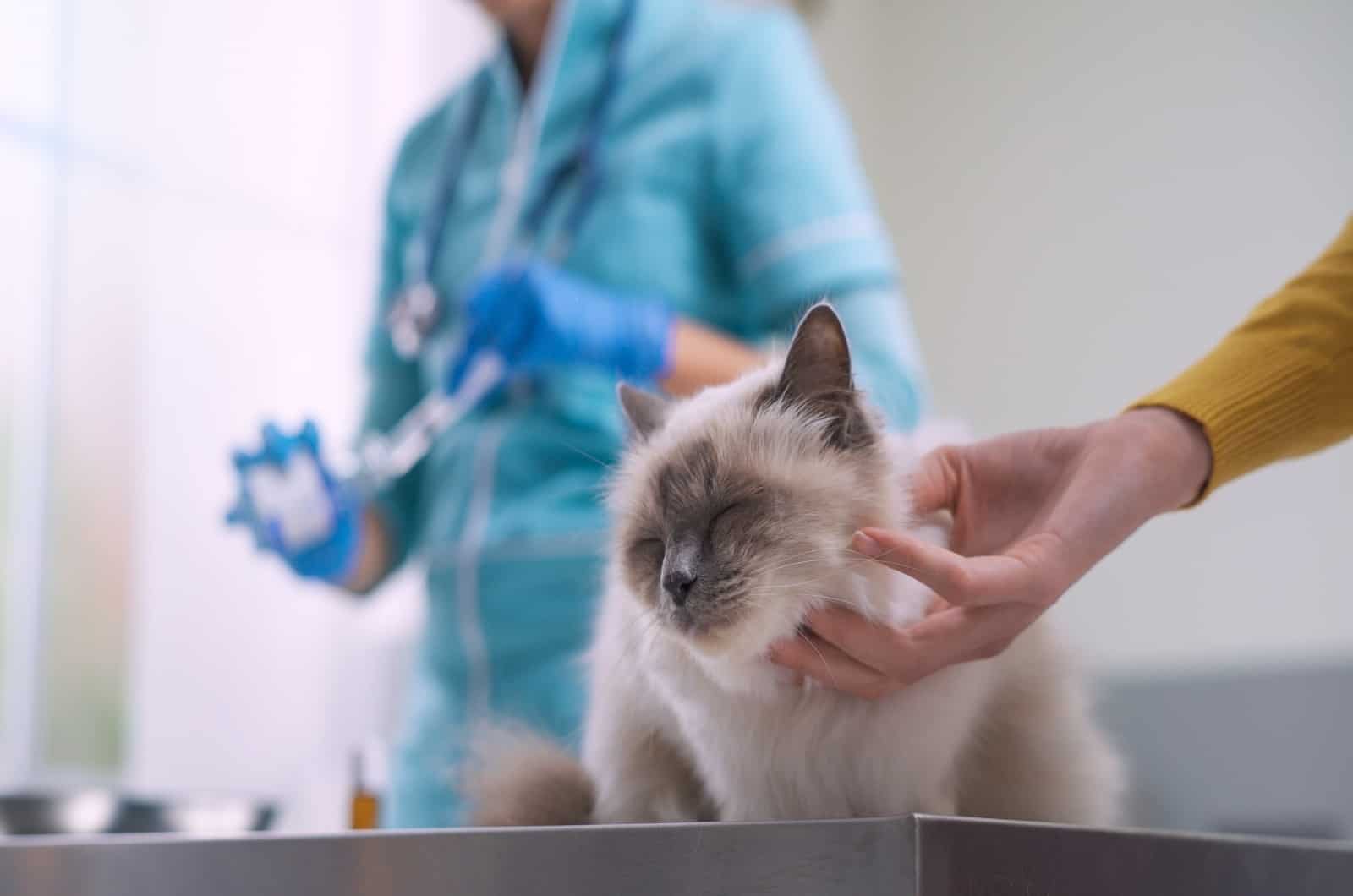
Convenia is a great option for anybody trying to keep their cat healthy and happy due to its ease of use, convenience, and effectiveness!
However, you must be informed of the potential hazards associated with Convenia as well as how to use it properly!
I hope you learned a lot from this article and I hope your cat recovers quickly!
Related Articles:
• Can You Put Neosporin On A Cat? Is It Safe Or Not?
• The Benefits Of Gabapentin For Cats – Is Using It Risk-Free?






